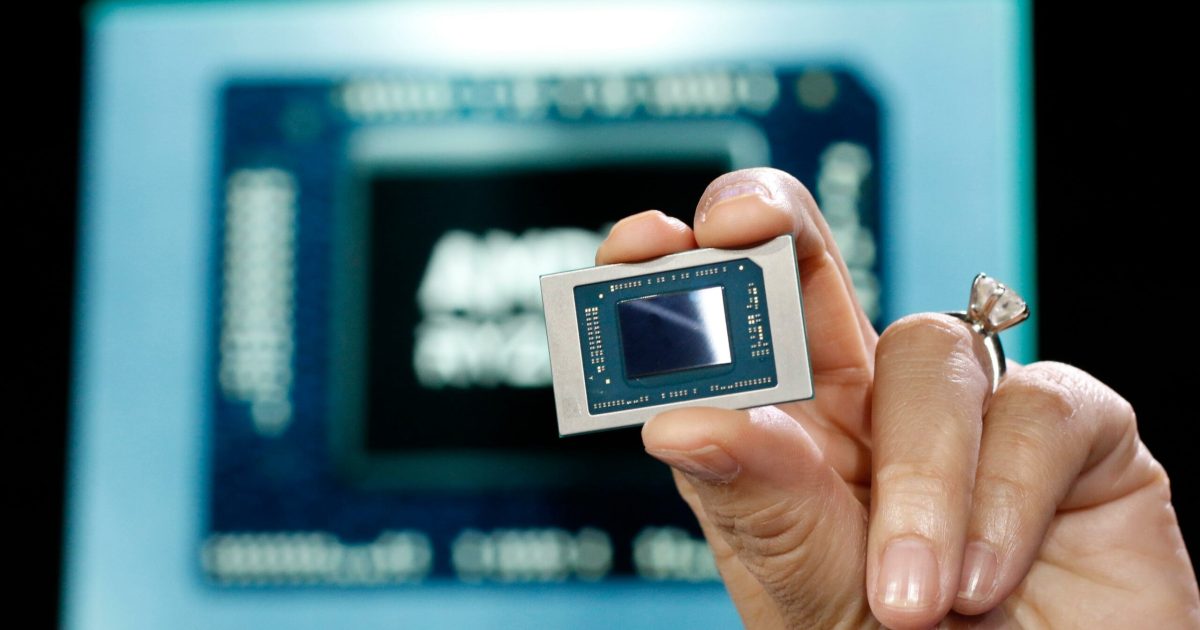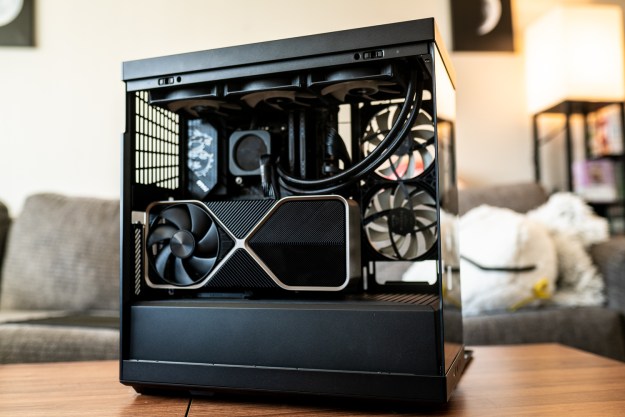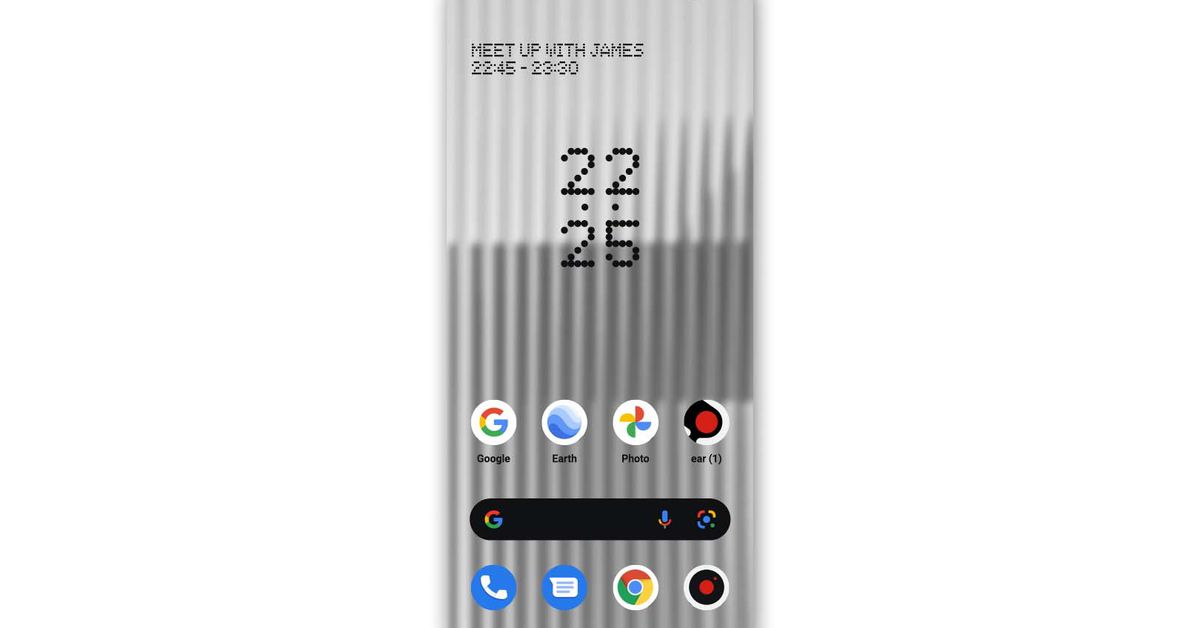Intel said AMD’s Ryzen 7000 is snake oil
A new marketing playbook from Intel compares AMD's Ryzen 7000 mobile processors to snake oil.

Digital Trends may earn a commission when you buy through links on our site. Why trust us?
 Intel
IntelIn what is one of the most bizarrely aggressive pieces of marketing material I’ve seen, Intel compared AMD’s Ryzen 7000 mobile chips to snake oil. Over the weekend, Intel posted its Core Truths playbook, which lays out how AMD’s mobile processor naming scheme misleads customers. The presentation has since been deleted, according to The Verge.
There’s an element of truth to that, which I’ll get to in a moment, but first, the playbook, which was first spotted by VideoCardz. Intel starts with claiming that there’s a “long history of selling half-truths to unsuspecting customers” alongside images of a snake oil salesman and a suspicious used car seller. This sets up a comparison between the Ryzen 5 7520U and the Core i5-1335U. Intel’s chip is 83% faster, according to the presentation, due to the older architecture that AMD’s part uses.
 AMD
AMDIntel has a point here. Last year, AMD changed its mobile naming convention, which obfuscated underpowered parts using an older architecture. Instead of matching architecture with generation, as Intel and AMD have done for years, AMD now says all of its mobile processors are part of the latest Ryzen 7000 generation regardless of the architecture they use.
Now, the third number in the name shows the architecture the CPU uses. For example, the Ryzen 5 7640U uses the Zen 4 architecture, while the Ryzen 5 7520U uses the Zen 2 architecture. It’s clear how this can be misleading when a chip using an older architecture is shown alongside the latest generation of CPUs.
It’s a little ironic coming from Intel, though. This was a few years ago, but it’s hard to forget that Intel sat behind its 14nm node introduced with Skylake on desktop for years, making incremental performance improvements with each generation that followed.
Some of that still applies today. Intel just released its 14th-gen processors for desktop, which are basically rebranded versions of its 13th-gen Raptor Lake processors. There are some performance improvements, but they aren’t very large. Similarly, we’re about to get 14th-gen Meteor Lake processors for laptops, but we aren’t seeing those chips on desktop, creating a mismatch for what “14th-gen” means for Intel across its product stack.
 Digital Trends
Digital TrendsStill, Intel’s shuffling with naming shouldn’t distract from AMD’s fault here. The Ryzen 7000 naming scheme is confusing on mobile, and it can mislead buyers into buying a processor that’s older than what the name implies. There are laptops using these chips, too. For instance, the Ryzen 7 7520U is featured in the Acer Aspire 3, which is an affordable laptop .
Thankfully, AMD’s chips aren’t available in a ton of laptops, at least not compared to Intel. Otherwise, the naming scheme would be a much bigger issue.
Intel’s playbook holds some truth, even if it is a little aggressive. Regardless, it’s proof that it’s always important to read up on a product you’re interested in buying, no matter if it comes from AMD or Intel.
Editors' Recommendations
The most innovative monitors of 2023 Graphics cards are selling again, and that worries me I fell in love with this PC case that looks like a cheese grater Asus’ forgotten ROG Ally is now totally worth the money This essential GPU feature isn’t as simple as you thinkJacob Roach is a writer covering computing and gaming at Digital Trends. After realizing Crysis wouldn't run on a laptop, he…
The best PC gaming hardware of 2023: GPUs, CPUs, monitors, and more
I reviewed a lot of PC gaming hardware in 2023, but only some of it truly stood out. This year, we saw the introduction of AMD's second-gen 3D V-Cache CPUs, the full lineup of Nvidia's RTX 40-series GPUs, and plenty of gaming peripherals that pushed the market forward.
As we approach the end of the year, it's time to look back at the best PC hardware I reviewed this year. If you're trying to build the ultimate PC gaming setup, these are the products you should pick up from this year.
Best graphics card: Nvidia RTX 4070
Graphics terms every PC gamer should know
PC gaming is filled with jargon that mixes together marketable names with scientific descriptions to create a pile of terms that are next to impossible to decipher. Knowing the vocabulary of graphics terms is important for optimizing your performance, understanding your games, and tweaking your graphics menus, and we're here to define all of the labels flying around.
We're focusing on terms that you'll find commonly in games that don't have an obvious definition -- we trust you can figure out what "reflection quality" means -- but there may be some terms we missed. If there's something you're wondering about, click that author name on top of this article and shoot me an email.
Graphics settings
Nvidia is ‘no longer a graphics company’
It's no secret that Nvidia has quickly morphed into an AI company. Although it creates some of the best graphics cards for PC gamers, the company's supercomputing efforts have catapulted it into being a trillion-dollar company, and that transformation was spurred on by the monumental rise of ChatGPT. That shift, from a graphics company to an AI company, was intentional choice by Nvidia's CEO Jensen Huang.
In a moment of saying the quiet part out loud, Greg Estes, the vice president of corporate marketing at Nvidia, said: "[Jensen] sent out an email on Friday evening saying everything is going to deep learning, and that we were no longer a graphics company. By Monday morning, we were an AI company. Literally, it was that fast."

 Troov
Troov 




































